Ming Dynasty Wanli Blue-and-White Meiping on Ge Glaze: A Relic from the Imperial Kilns of the Ming Dynasty, Boasting the Elegance of Crackled Glaze
[Product Name] Ming Dynasty Wanli Blue-and-White Meiping on Ge Glaze
Era: The Wanli period of the Ming Dynasty (1573 – 1620) Category: Celadon series – Ge glaze blue-and-white – Classic vessel shape
[Craft Analysis: The Perfect Fusion of Ge Glaze Crackling and Blue-and-White Painting]
1. Ge Glaze Crackling: Natural Ice Cracks, Traces of Time
The bottle body is coated with a typical Ge glaze, the surface of which is densely covered with naturally – formed “ice cracks” (commonly known as “hundred – piece fragmentation”). The fine and criss – crossed patterns vary in depth, resembling a cracked ice surface but in an orderly manner. Crackling is a unique feature of Ge kiln porcelain, not artificially created but naturally formed due to the different cooling shrinkage rates of the glaze and the body. After four hundred years of precipitation, the glaze surface is as smooth as jade, with a delicate patina that feels like touching an ancient jade when stroked.
2. Blue-and-White and Sauce – Colored Decorations: The Essence of Ming Dynasty Porcelain Painting
-
Blue-and-White Painted Leaves: The branches and leaves are painted with the classic blue-and – white pigment of the Ming Dynasty. The color is stable and gorgeous, with a sharp contrast between blue and white. The brushstrokes are smooth and powerful, and the veins of the leaves are clearly distinguishable, demonstrating the traditional technique of “fen shui cun ca” (a method of applying ink and color in Chinese painting).
-
Sauce – Colored Decorated Flowers: The flowers are dotted with sauce – colored pigment, with a warm and simple color. They contrast and complement the blue – and – white leaves, creating a rich – layered and three – dimensional effect, which reflects the aesthetic style of “freehand flower – and – bird painting” in the late Ming Dynasty.
[Vessel Shape and Patterns: The Classic Model of Ming Dynasty Meiping]
1. Elegant Vessel Shape: The Beauty of the Meiping Style
It adopts the standard Meiping shape of the Ming Dynasty: a small mouth with a constricted lip, a short neck and broad shoulders, a tapering abdomen, and a stable base. The overall lines of the vessel are round and full, with a well – proportioned ratio. The transition between the shoulders and the abdomen is natural, showing both stability and elegance. It conforms to the dual functions of “Meiping used for holding wine and for ornamental purposes” and is a classic shape favored by the imperial court and the literati class in the Ming Dynasty.
2. Symbolic Meaning of Patterns: The Auspicious Culture of Twining Flowers
The main pattern is “twining flowers”, with the branches and leaves winding and stretching, and the flowers being large and plump, symbolizing “wealth and prosperity that lasts forever and continuous growth”. The layout of the pattern is well – spaced, extending from the shoulders to the abdomen without a sense of overcrowding, reflecting the “spacious and grand” decorative feature of the late Ming Dynasty and implying the traditional Chinese philosophical idea of “harmony between man and nature”.
[Historical Value: The Mark of Wanli Porcelain Art]
The Wanli period (1573 – 1620) of the Ming Dynasty was a “prosperous period” in the history of Chinese ceramics. Both imperial kilns and folk kilns thrived, and the porcelain – making technology reached its peak. The combination of Ge glaze and blue – and – white was an innovative breakthrough of the craftsmen at that time in traditional techniques – using the “natural beauty of crackling in Ge glaze” as the base to set off the “humanistic charm of painting in blue – and – white”, demonstrating the porcelain – making concept of “integration of technology and art” in the mid – to – late Ming Dynasty. As a representative vessel of this period, this Meiping is not only a practical utensil but also a cultural carrier that inherits Eastern aesthetics and historical memories.
[Condition Description: The Authentic State of a Centuries – Old Heirloom]
-
Glaze Surface: The crackling is uniform and natural, without large – scale peeling. There are slight traces of use in some areas, which are caused by natural inheritance rather than damage.
-
Mouth Rim: It is coated with a sauce – colored protective glaze, contrasting with the Ge glaze. The glaze surface is intact, without chips, and the edge is smooth.
-
Overall: The body is firm. When tapped gently, it emits a clear and muffled sound (a characteristic of Ming Dynasty porcelain bodies). There are no obvious cracks, and the base has no repairs, retaining the original trace of the fire – stone red. It is a “genuine heirloom in good condition”.
[Collection and Display: A Choice for Inheriting Eastern Art]
-
Collection Value: The blue – and – white porcelain on Ge glaze from the Wanli period of the Ming Dynasty has a limited surviving quantity. This piece has natural crackling, exquisite painting skills, and is in good condition, possessing the three major collection elements of “long history, unique craftsmanship, and auspicious symbolism”. It is an ideal collection for senior antique collectors and lovers of Eastern art.
-
Display Suggestion: It is suitable for display on a bookcase in a study or a display cabinet in a living room. Paired with a log base or a silk cushion, it can be placed together with antiques such as Ming and Qing calligraphy and paintings and copper stoves to create a classical atmosphere of “qin, qi, shu, hua” (the four arts of the Chinese literati) and “scholarly antiques”, highlighting the owner’s in – depth understanding of Eastern culture.
[Purchase and Collection Notes]
-
This product is an antique passed down from the Ming Dynasty. All descriptions are based on actual observation, and the pictures are consistent with the actual item. More detailed pictures can be requested for independent appraisal before purchase.
-
The antique will be fully insured during transportation and professionally packed for protection to ensure its safe arrival.
-
A collection manual (including the historical background and craft analysis) will be provided, and re – appraisal by an antique appraisal institution is supported.
VirtuCasa Oriental Antique Gallery adheres to the principle of “authentic inheritance, eternal art”. Each collection carries thousands of years of Eastern civilization, opening a cultural dialogue across time and space for you.
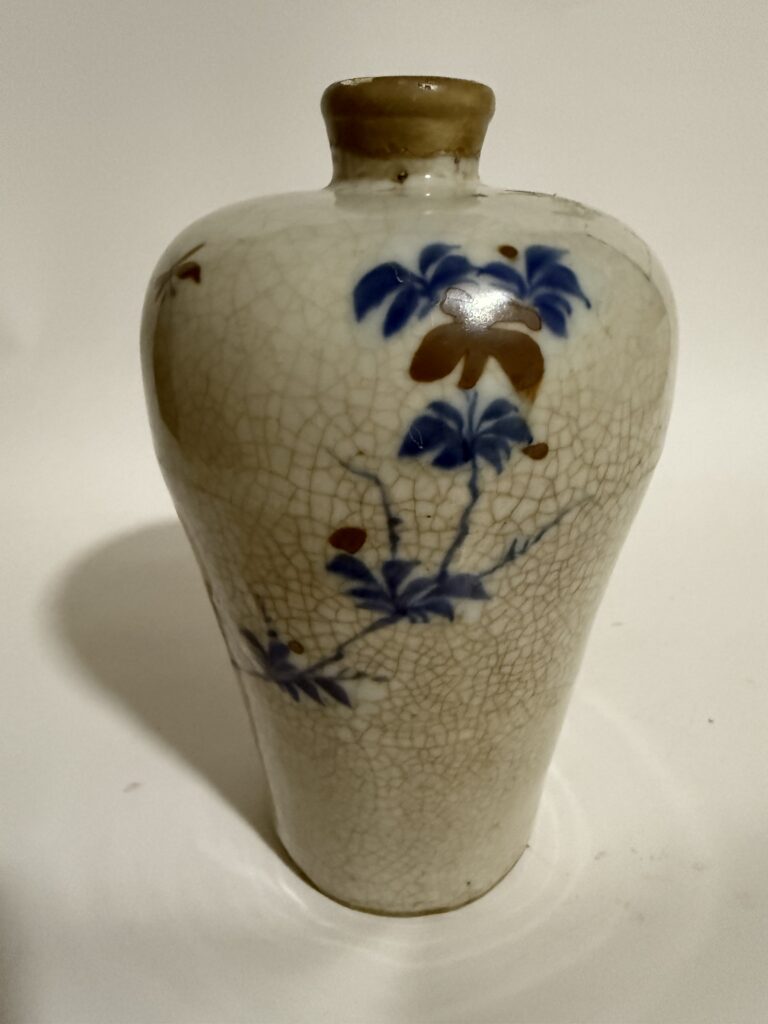
明萬曆哥釉地青花梅瓶 | 明代官窯遺珍 開片雅韻之美
【品名】明萬曆哥釉地青花梅瓶
年代:明代萬曆年間 (1573-1620) 類別:青瓷系·哥釉青花·經典器型
【工藝解析:哥釉開片與青花的完美融合】
1. 哥釉開片:自然冰裂 歲月留痕
瓶身施典型哥釉,釉面密布自然形成的「冰裂紋」(俗稱「百圾碎」),紋理細密交錯,深淺不一,如冰面碎裂卻井然有序。開片為哥窯獨有特徵,非人工刻意為之,乃釉料與胎體冷卻收縮率不同自然形成,歷經四百年歲月沉澱,釉面溫潤如玉,包漿細膩,觸之如撫古玉。
2. 青花與醬彩點綴:明代瓷繪精髓
-
青花繪葉:以明代經典青花料繪製枝葉,发色沉穩靚麗,藍白對比鮮明,筆觸流暢有力,葉脈清晰可辨,展現「分水皴擦」的傳統技法。
-
醬彩飾花:花朵以醬色彩料點染,色澤溫潤古樸,與青花葉片相互映襯,層次豐富,立體感強,體現明代晚期「花鳥寫意」的審美風格。
【器型與紋飾:明代梅瓶的經典範式】
1. 器型端莊:梅瓶制式之美
採用明代標準梅瓶器型:小口斂唇,短頸豐肩,腹部下收,底足平穩。整器線條圓潤飽滿,比例勻稱,肩腹過渡自然,既顯穩重又不失秀雅,符合「梅瓶用於盛酒,亦為觀賞」的雙重功能,是明代宮廷與文人階層喜愛的經典器型。
2. 紋飾寓意:纏枝花卉的吉祥文化
主紋為「纏枝花卉」,枝葉盤旋綿延,花朵碩大飽滿,象徵「富貴綿長,生生不息」。紋樣佈局疏密有致,從肩部延伸至腹部,無繁雜堆砌之感,體現明代晚期「疏朗大氣」的裝飾特點,暗含中國傳統「天人合一」的哲學思想。
【歷史價值:萬曆瓷藝的時代印記】
明代萬曆年間(1573-1620)是中國陶瓷史上的「繁榮期」,官窯與民窯並興,制瓷技術達到巔峰。哥釉與青花的結合,是當時工匠對傳統工藝的創新突破——以哥釉的「開片自然之美」為底,襯托青花的「繪畫人文之韻」,展現了明代中晚期「技術與藝術融合」的制瓷理念。此件梅瓶作為該時期的代表性器物,不僅是實用器皿,更是傳承東方審美與歷史記憶的文化載體。
【品相描述:百年傳世的真實狀態】
-
釉面:開片均勻自然,無大面積剝落,局部可見細微使用痕跡,為自然傳世所致,非損傷。
-
口沿:施醬色護胎釉,與哥釉形成對比,釉面完整,無磕缺,邊緣光滑。
-
整體:胎體堅實,輕敲之音清脆悶厚(明代瓷胎特徵),無明顯衝裂,底足無修補,保留原始火石紅痕跡,屬「傳世真品,狀態良好」。
【收藏與展示:東方藝術的傳承之選】
-
收藏價值:明代萬曆哥釉青花存世量有限,此件開片自然、繪工精湛、品相完好,兼具「年代久遠、工藝獨特、寓意吉祥」三大收藏要素,是資深古董收藏家與東方藝術愛好者的理想藏品。
-
展示建議:適用於書房博古架、客廳陳列櫃,搭配原木底座或絲綢襯墊,可與明清字畫、銅爐等古董同置,營造「琴棋書畫,文房清供」的古典氛圍,彰顯主人對東方文化的深層理解。
【購藏須知】
-
本品為明代傳世古董,所有描述基於實物觀察,圖片與實物一致,購買前可索取更多細節圖供獨立鑒定。
-
古董運輸全程保險,專業防護包裝,確保藏品安全抵達。
-
附收藏說明書(含年代背景、工藝解析),支持古董鑒定機構復核。
VirtuCasa 東方古董館 堅持「真實傳承,藝術永存」,每件藏品均承載千年東方文明,為您開啟跨越時空的文化對話。

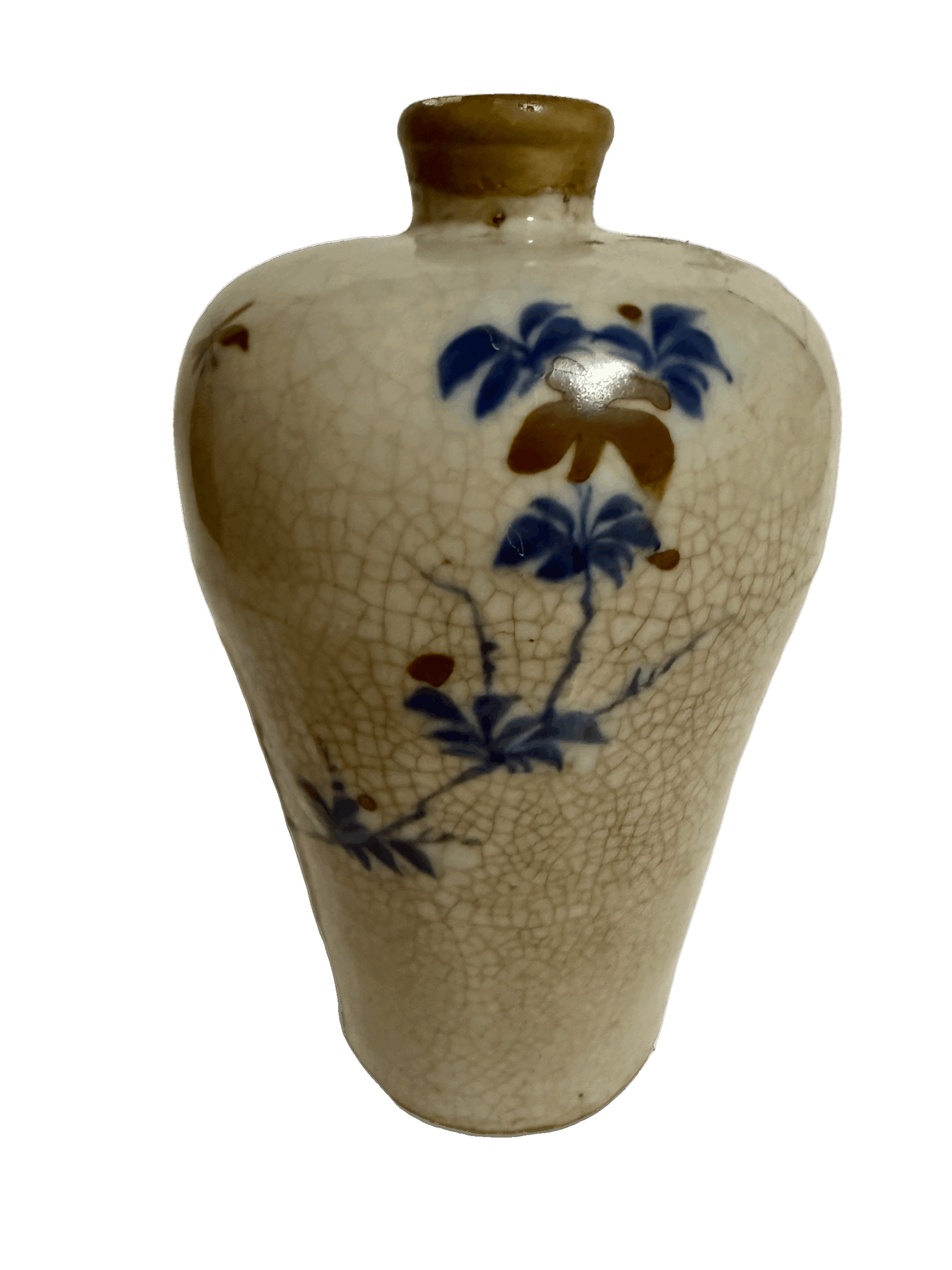
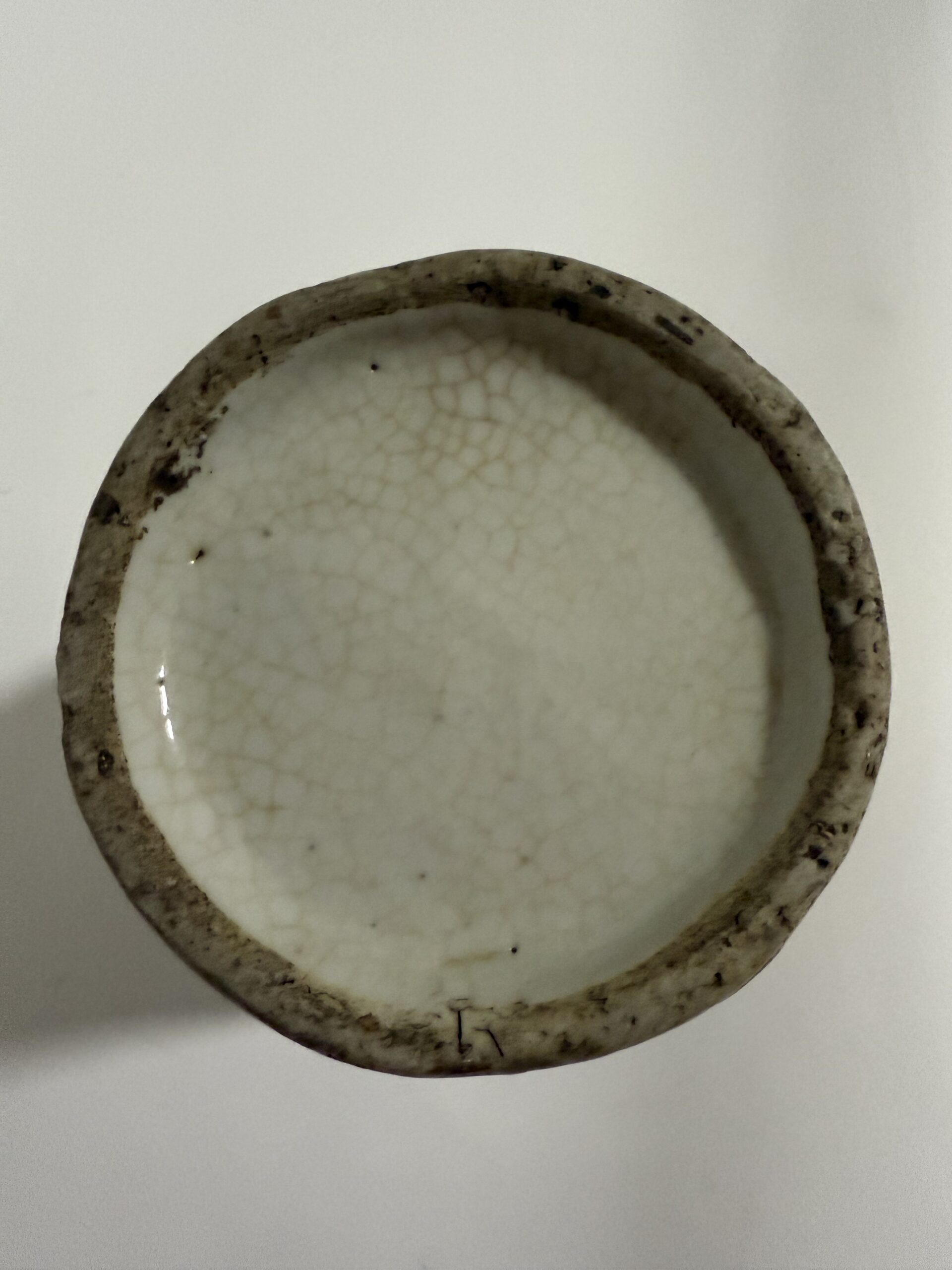
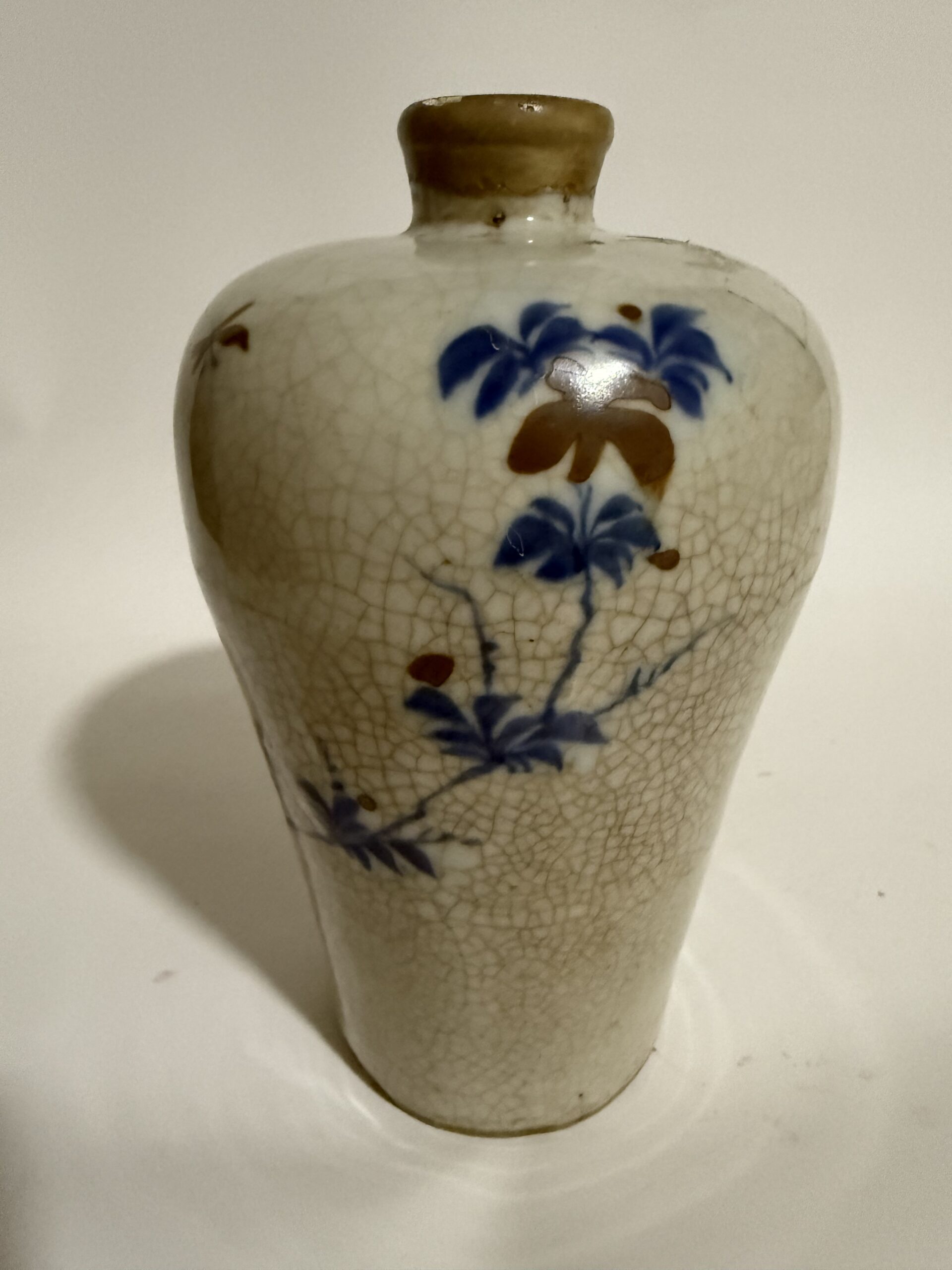

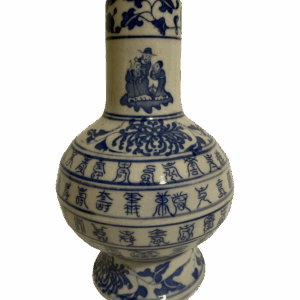
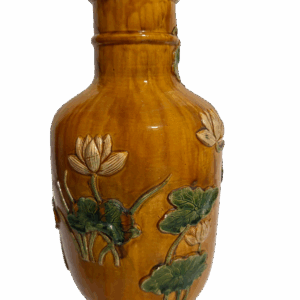
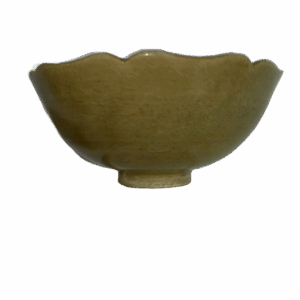
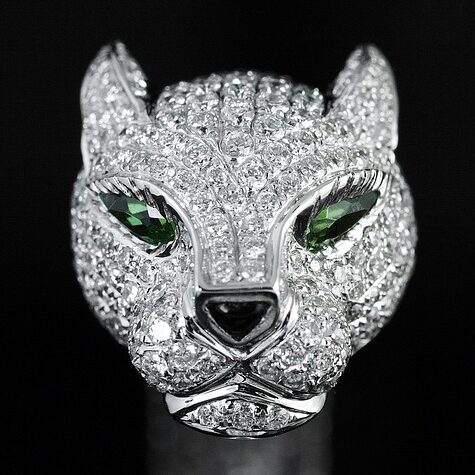
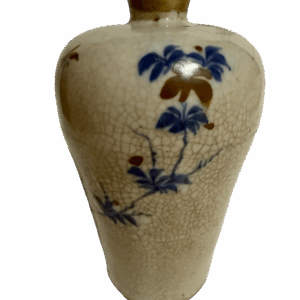
Reviews
There are no reviews yet.